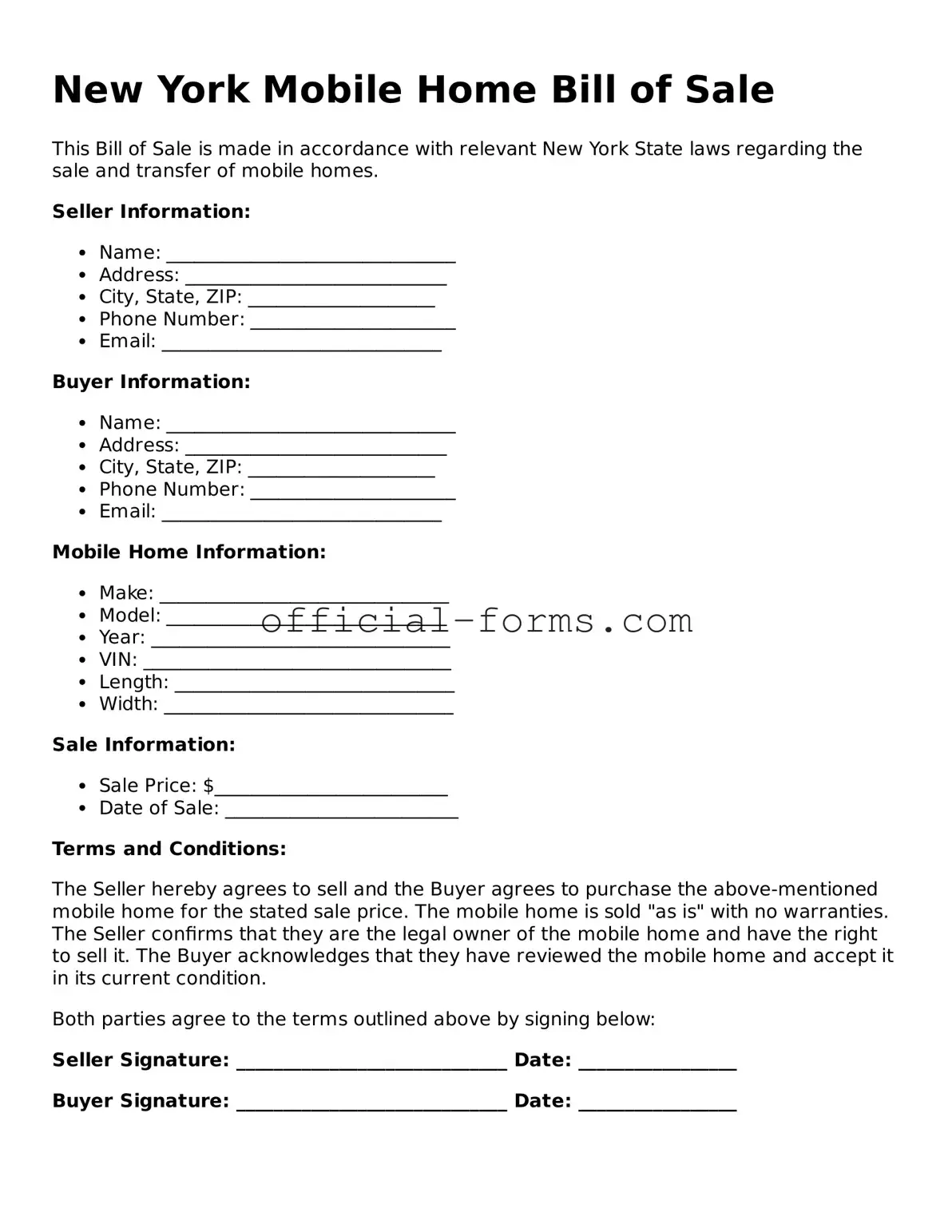Official New York Mobile Home Bill of Sale Document
The New York Mobile Home Bill of Sale form is a legal document used to transfer ownership of a mobile home from one party to another. This form outlines the details of the sale, including the buyer, seller, and the mobile home’s specifications. Understanding this form is essential for ensuring a smooth transaction and protecting both parties' interests.
Open My Mobile Home Bill of Sale Now
